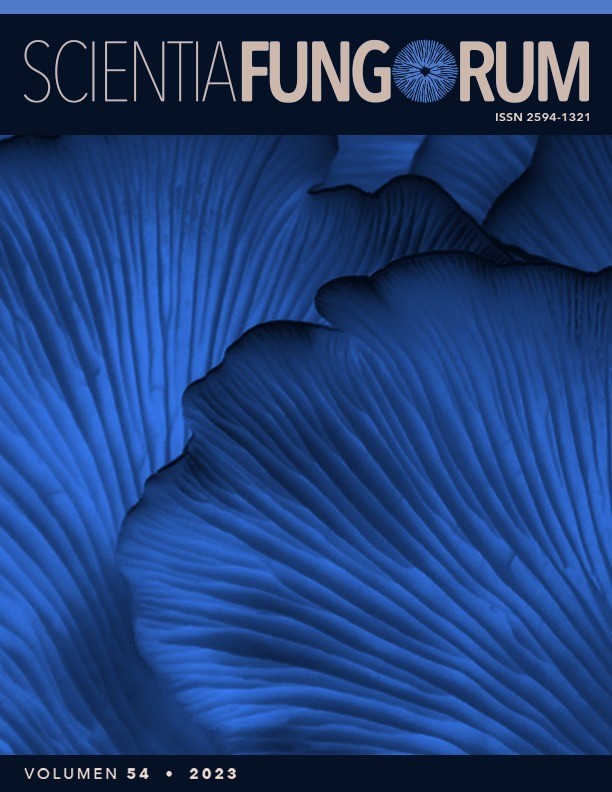Cordyceps sensu lato: the current state of knowledge in Mexico
DOI:
https://doi.org/10.33885/sf.2023.54.1421Abstract
Background: Cordyceps s.l. is a paraphyletic group of Ascomycete fungi that parasitize mainly arthropods. In Mexico,
these fungi have been little studied and the current state of their diversity is unknown.
Objective: To describe the history of the records of Cordyceps s.l. from Mexico, and to generate a checklist of the species,
detailing their hosts and geographical distribution.
Methods: A literature review was conducted addressing on Cordyceps s.l. cited from Mexico from 1864 to 2022. Geographical distribution maps of Clavicipitaceae, Cordycipitaceae, and Ophiocordycipitaceae were created in the QGIS 3.18.1
Software.
Results and conclusions: The first record of Cordyceps in Mexico dates back to 1864. To date, 35 species of Cordyceps
s.l. have been recorded, equivalent to 3.5% of the diversity of the genus recorded worldwide. The geographical distribution of these species is determined by their hosts and consequently by the vegetation. The species with the greatest
geographical distribution were: Beauveria bassiana and Cordyceps militaris of Cordycipitaceae; Metarhizium anisopliae of
Clavicipitaceae; and Tolypocladium capitatum and T. ophioglossoides of Ophiocordycipitaceae. Beauveria bassiana and
Metarhizium anisopliae are the most studied species due to their pathogenicity to different crop pests.
Downloads
Downloads
Published
Versions
- 2024-04-23 (3)
- 2023-10-05 (2)
- 2023-06-07 (1)
How to Cite
Issue
Section
License
Copyright notice
Open access policy
The authors who publish in this journal accept the following conditions:
In accordance with copyright laws, Scientia Fungorum recognizes and respects the authors’ moral rights, as well as the ownership of property rights, which will be transferred to the journal for dissemination in open access. Scientia Fungorum does not charge for submission and processing of articles for publication.
All the texts published by Scientia Fungorum –with no exception– are distributed under a Creative Commons License Attribution-NonCommercial-ShareAlike 4.0 International (CC BY-NC-SA 4.0), which allows third parties to use the publication as long as the work’s authorship and its first publication in this journal are mentioned.
The authors can enter into independent and additional contractual agreements for the nonexclusive distribution of the version of the article published in Scientia Fungorum (for example include it into an institutional repository or publish it in a book) as long as it is clearly and explicitly indicated that the work was published for the first time in Scientia Fungorum.
For all the above, the authors shall send the form of Letter-transfer of Property Rights for the first publication duly filled in and signed by the author(s). This form must be sent as a complementary file.
This work is licensed under a Creative Commons Attribution-NonCommercial-ShareAlike 4.0 International license (CC-By-NC-SA 4.0).



